
Manila Bay is a natural harbor that serves the Port of Manila, in the Philippines. Strategically located around the capital city of the Philippines, Manila Bay facilitated commerce and trade between the Philippines and its neighboring countries, becoming the gateway for socio-economic development even prior to Spanish occupation. With an area of 1,994 km2 (769.9 sq mi), and a coastline of 190 km (118.1 mi), Manila Bay is situated in the western part of Luzon and is bounded by Cavite and Metro Manila on the east, Bulacan and Pampanga on the north, and Bataan on the west and northwest. Manila Bay drains approximately 17,000 km2 (6,563.7 sq mi) of watershed area, with the Pampanga River contributing about 49% of the freshwater influx. With an average depth of 17 m (55.8 ft), it is estimated to have a total volume of 28.9 billion cubic meters. Entrance to the bay is 19 km (11.8 mi) wide and expands to a width of 48 km (29.8 mi). However, width of the bay varies from 22 km (13.7 mi) at its mouth and expanding to 60 km (37.3 mi) at its widest point.

The Hawaiian people practiced aquaculture through development of fish ponds, the most advanced fish husbandry among the original peoples of the Pacific. While other cultures in places like Egypt and China also used the practice, Hawaii’s aquaculture was very advanced considering the much smaller size of the area compared to others before it. These fishponds were typically shallow areas of a reef flat surrounded by a low lava rock wall built out from the shore. Several species of edible fish thrive in such ponds, and Hawaiians developed methods to make them easy to catch.

Iloilo, officially the Province of Iloilo, is a province in the Philippines located in the Western Visayas region. Its capital is the City of Iloilo, the regional center of Western Visayas. Iloilo occupies a major southeast portion of the Visayan island of Panay and is bordered by the province of Antique to the west, Capiz to the north, the Jintotolo Channel to the northeast, the Guimaras Strait to the east, and the Iloilo Strait and Panay Gulf to the southwest.

Capiz, officially the Province of Capiz, is a province in the Philippines located in the central section of Western Visayas region. Its capital is the city of Roxas. It is located at the northeastern portion of Panay Island, bordering Aklan to the north, Antique to the west, and Iloilo to the south. Capiz faces the Sibuyan Sea to the north.
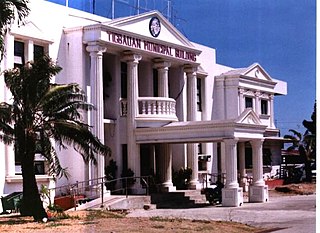
Tigbauan, officially the Municipality of Tigbauan, is a 2nd class municipality in the province of Iloilo, Philippines. According to the 2020 census, it has a population of 65,245 people.

Roxas City, officially known as the City of Roxas, is a 3rd class component city and capital of the province of Capiz, Philippines. According to the 2020 census, it has a population of 179,292 people.

Iloilo City, officially known as the City of Iloilo, is a 1st class highly urbanized city in the Western Visayas region of the Philippines on the island of Panay. It is the capital city of the province of Iloilo, where it is geographically situated and grouped under the Philippine Statistics Authority, but remains politically independent in terms of government and administration. In addition, it is the center of the Iloilo–Guimaras Metropolitan Area, as well as the regional center and primate city of the Western Visayas region. According to the 2020 census, Iloilo City has a population of 457,626 people. For the metropolitan area, the total population is 1,007,945 people.

Dumangas, officially the Municipality of Dumangas, is a 1st class municipality in the province of Iloilo, Philippines. According to the 2020 census, it has a population of 73,899 people.

Bais, officially known as the City of Bais, is a 3rd class component city in the province of Negros Oriental, Philippines. According to the 2020 census, it has a population of 84,317 people.
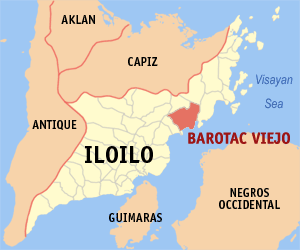
Barotac Viejo, officially the Municipality of Barotac Viejo, is a 3rd class municipality in the province of Iloilo, Philippines. According to the 2020 census, it has a population of 48,614 people.
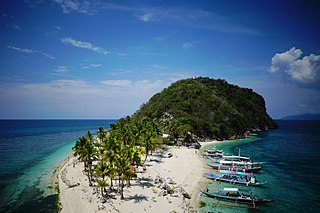
Carles, officially the Municipality of Carles, is a 2nd class municipality in the province of Iloilo, Philippines. According to the 2020 census, it has a population of 72,637 people.
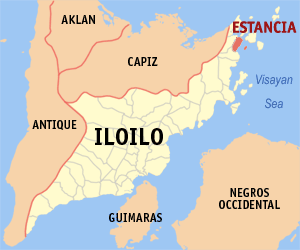
Estancia, officially the Municipality of Estancia, is a 2nd class municipality in the province of Iloilo, Philippines. According to the 2020 census, it has a population of 53,200 people.

New Lucena, officially the Municipality of New Lucena, is a 4th class municipality in the province of Iloilo, Philippines. According to the 2020 census, it has a population of 24,314 people.

The Central Philippine University is a private research university in Iloilo City, Philippines. Established in 1905 through a benevolent grant of the American industrialist and philanthropist, John D. Rockefeller, as the Jaro Industrial School and Bible School under the auspices of the American Baptist Foreign Mission Society, it is the first Baptist founded and second American and Protestant university in the Philippines and in Asia. In 1913, women were first admitted to the school and it was later converted into a junior college in 1923 as Central Philippine School and as Central Philippine College in 1924. In 1953, the college attained university status.

Mandurriao is one of the seven districts of Iloilo City, in the province of Iloilo, on the island of Panay, in the Western Visayas region, in the Philippines. It is the second-largest district by land area as well as the third-most populous district, with 62,240 people in the 2020 census. Mandurriao is the site of the developing Iloilo midtown area, where major city developments have been concentrated over the last two decades. It is projected to be the next commercial and financial hub of Iloilo City.

The University of the Philippines Visayas is a regional public research university in the Philippines with campuses and facilities throughout the Visayas. A constituent university of the University of the Philippines system, it teaches management, accountancy, marketing, economics, chemistry, applied mathematics and physics, marine science education and research, fisheries, and aquaculture. It offers regional studies programs on the preservation and enrichment of the Visayan cultural heritage.

Aglaia argentea is a species of plant in the family Meliaceae. It is a tree found in Australia, Brunei, India, Indonesia, Malaysia, Myanmar, Papua New Guinea, the Philippines, the Solomon Islands, and Thailand.

The Iloilo Science and Technology University is a state research university located in La Paz, Iloilo City, Philippines. Founded in 1905 under the American colonial government of the Philippines, it is mandated and chartered as a polytechnical university by the Philippine government to provide undergraduate and graduate courses in technology education, agriculture, fishery, engineering, arts and sciences, forestry, business, health, computer, criminology, nautical and short-term vocational-technical and other continuing courses. It attained its university status in 2013 renaming it to its present name, the Iloilo Science and Technology University (ISAT-U).
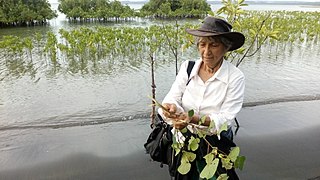
Jurgenne Honculada-Primavera is a widely cited Filipina marine scientist. For her research in mangrove ecosystem conservation she was honored as one of Time magazine's Heroes of the Environment for 2008. She was inducted into the National Academy of Science and Technology (NAST) in 2015.
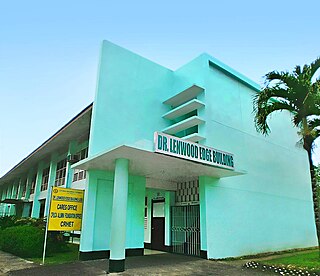
The Central Philippine University College of Agriculture, Resources and Environmental Sciences, also referred to as CPU CARES or CPU Agriculture, is one of the academic units of Central Philippine University, a private university in Iloilo City, Philippines. Founded in 1951 by the American Agriculturist Burl Alba Slocum as the CPU College of Agriculture, it is the first agricultural school established outside of Luzon, and one of the leading schools of agriculture in the Philippines.



















